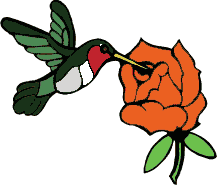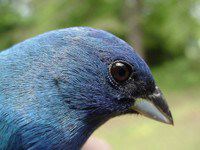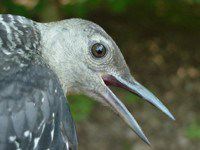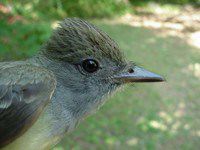 HOME: www.hiltonpond.org |
|
||
|
|
|||
|
|
|||
|
|
|||
|
|
|||
|
|
|||
|
THIS WEEK at HILTON POND |
 DON'T MISS DON'T MISS"HUMMINGBIRD MORNINGS" |
 HOME: www.hiltonpond.org |
|
||
|
|
|||
|
|
|||
|
|
|||
|
|
|||
|
|
|||
|
THIS WEEK at HILTON POND |
 DON'T MISS DON'T MISS"HUMMINGBIRD MORNINGS" |
|
Although some wildflowers are notoriously difficult to identify, one native that will cause no trouble for the woodland wanderer is Spotted or Striped Wintergreen, Chimaphila maculata--one of several plants commonly called "Pipsissewa." This plant of dry, acidic soils may reach its densest distribution in the Carolina Piedmont, but also is found in the Coastal Plain and mountain regions. Here at Hilton Pond Center, it grows in heavy shade beneath both hardwoods and pines.
Spotted Wintergreen is a "subshrub" on forest floors, reaching a height of perhaps nine inches. For most of the year, it is identifiable by thick waxy leaves with prominent whitish midribs (below right). In spring, the older dark blue-green foliage is succeeded by a whorl of younger leaves that are much paler. After fertilization, blossoms of Spotted Wintergreen turn upward 180º and develop brown capsules that often persist into the next flowering season. These capsules bear small seeds that seem to germinate especially well after wildfires that occurred commonly across the plant's natural range from Canada south throughout much of the eastern U.S. Spotted Wintergreen also reproduces by underground runners, which accounts for the fact that plants are often found growing in clusters. Spotted Wintergreen is considered rare in New England and endangered in Ontario. Curiously, there is a disjunct population in Arizona, and recently the plant has been found in Mexico and the Pacific slope of Costa Rica.
Although Spotted Wintergreen--and another Pipsissewa, Chimaphila umbellata--are sometimes used to flavor candy and root beer, we recommend this increasingly rare plant never be collected. At Hilton Pond Center, we carefully protect each trailside colony from footfall or accidental cutting, and enthusiastically remove Japanese Honeysuckle that might otherwise crowd it out. As extra incentive to let Spotted Evergreen grow unmolested, it's worth knowing that some folks are sensitive to the oils of the plant and have a dermatological response. So now when you go to the woods, look at it, identify it with confidence, but just don't touch the foliage. If you enjoy "This Week at Hilton Pond," please help Support Hilton Pond Center for Piedmont Natural History |
 (Males are bright blue, females are nondescript brown) The following species were banded this week (8-14 June): Ruby-throated Hummingbird--1 * = At least one Recent Fledgling  (Juveniles lack red on the head) |
WEEKLY BANDING TOTAL YEARLY BANDING TOTAL (2001) 63 species 622 individuals BANDING GRAND TOTAL (since 28 June 1982) 122 species 38,905 individuals  (Call is an ascending"wheeep!")
NOTABLE RECAPTURES WITH ORIGINAL BANDING DATES: Northern Cardinal (1) 11/17/95
|
|
Up to Top of Page Current Weather Conditions at Hilton Pond Center |
 post questions for The Piedmont Naturalist |
 Nature Study Network |
Hilton Pond Center |
|
|